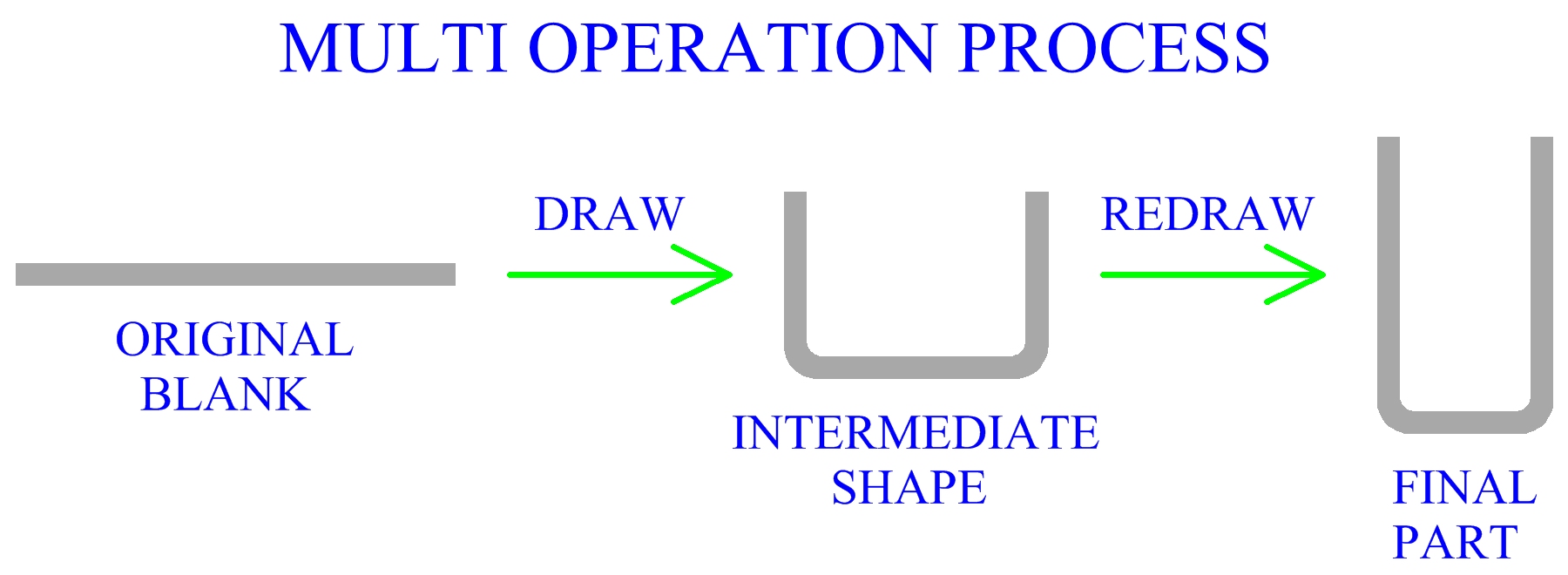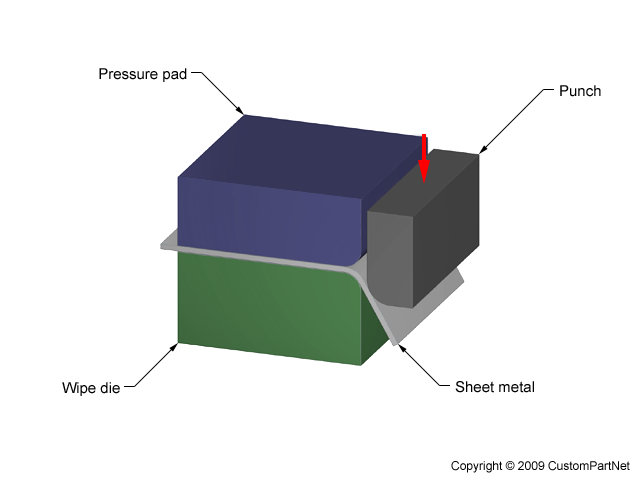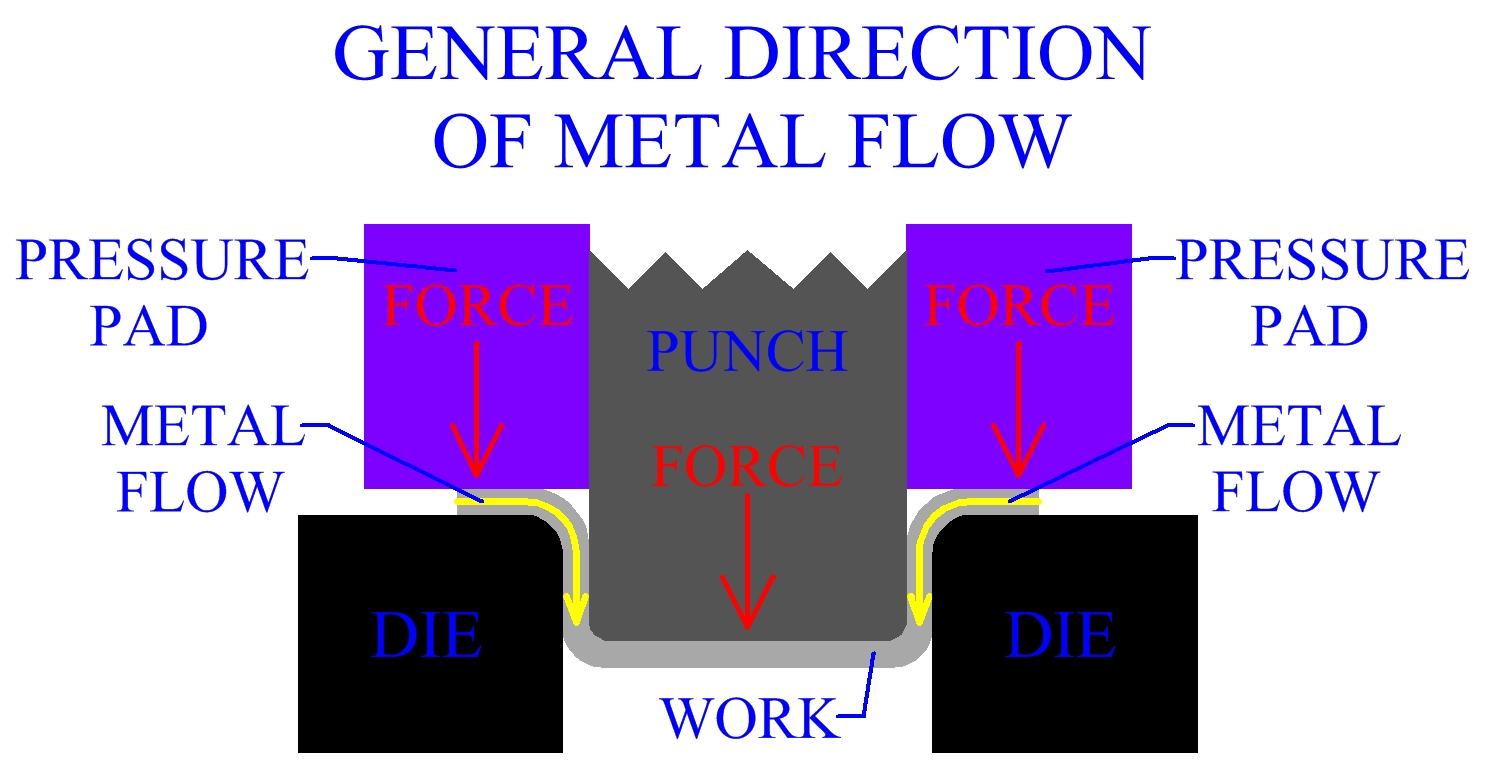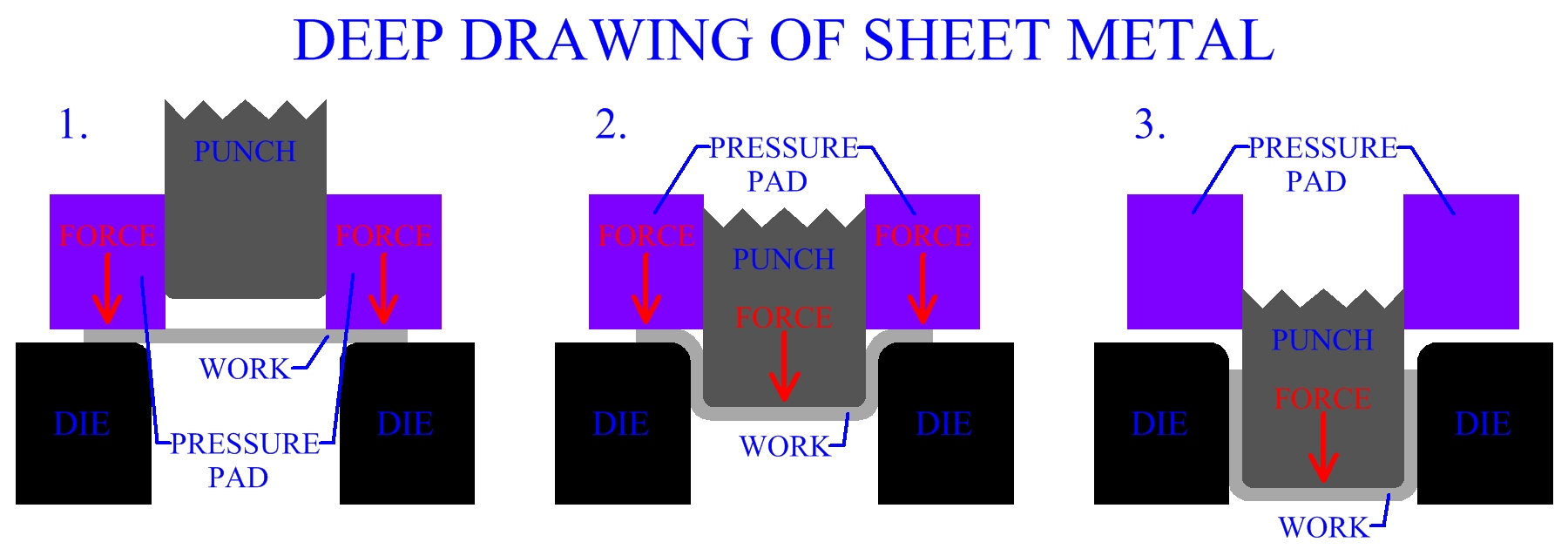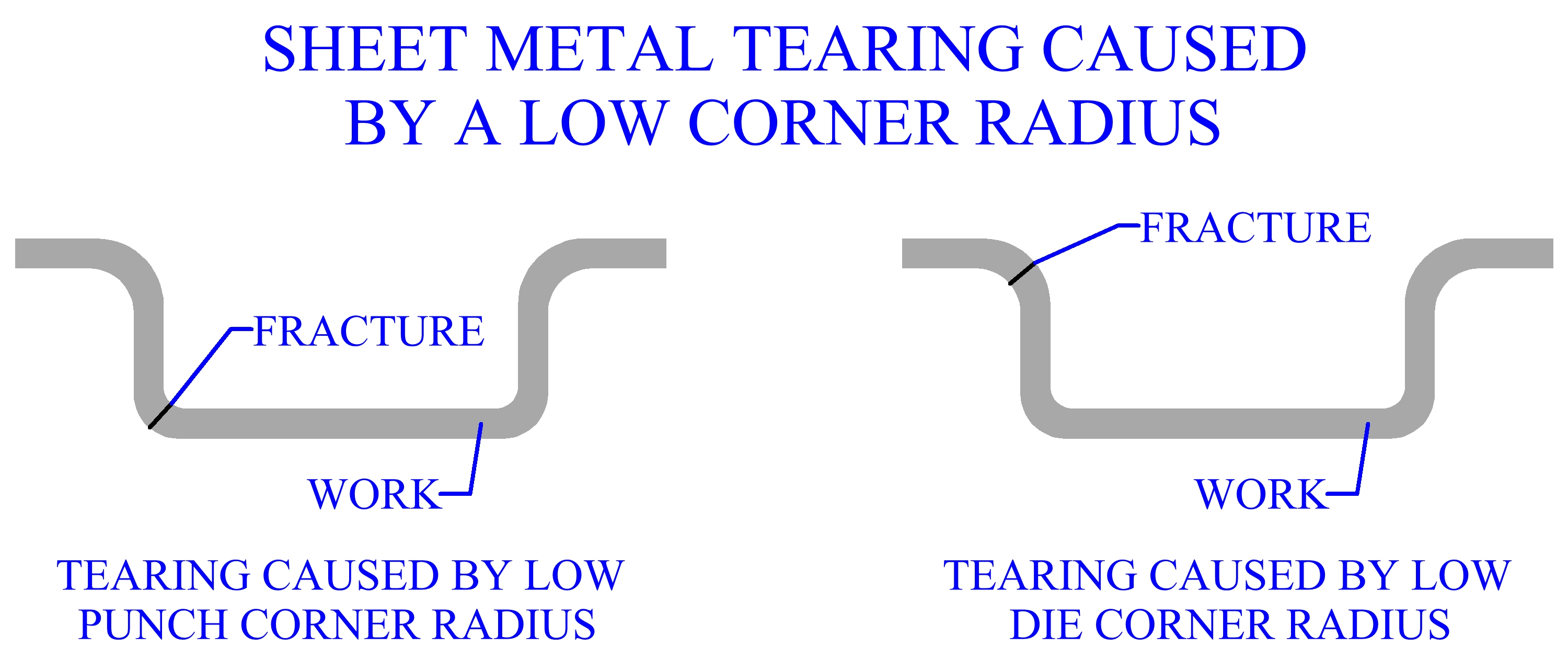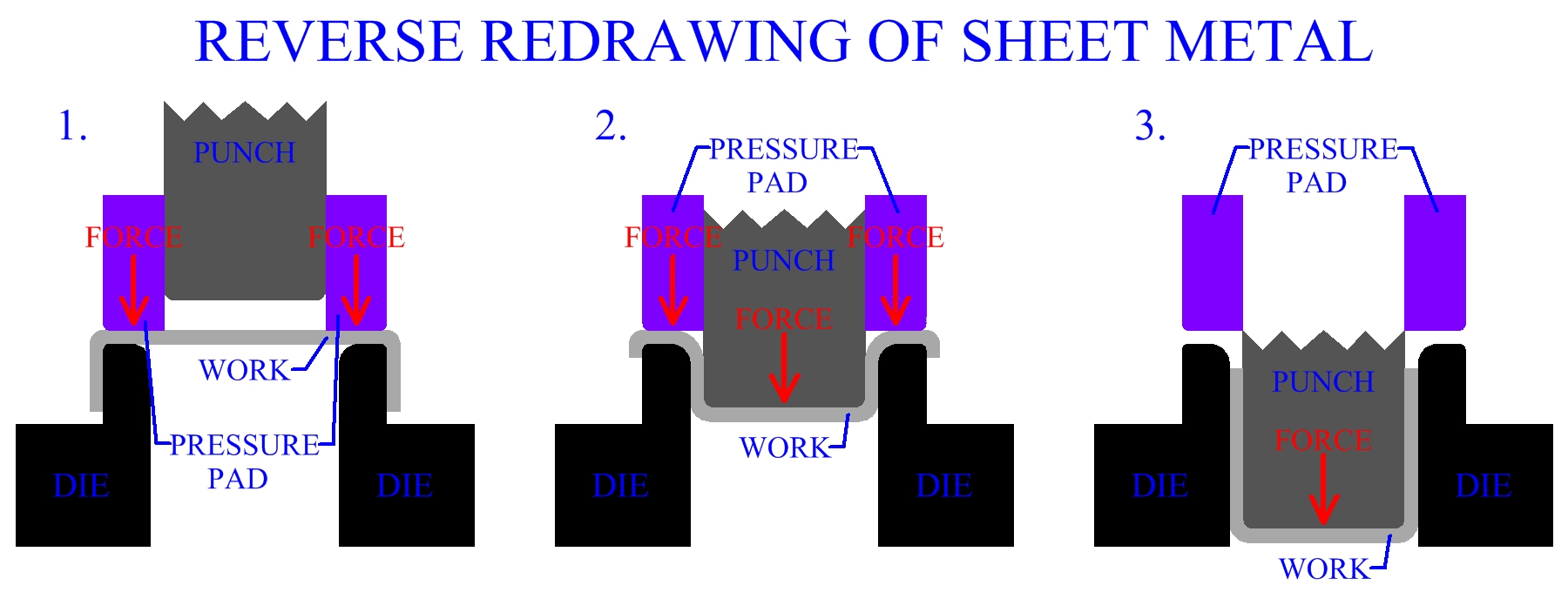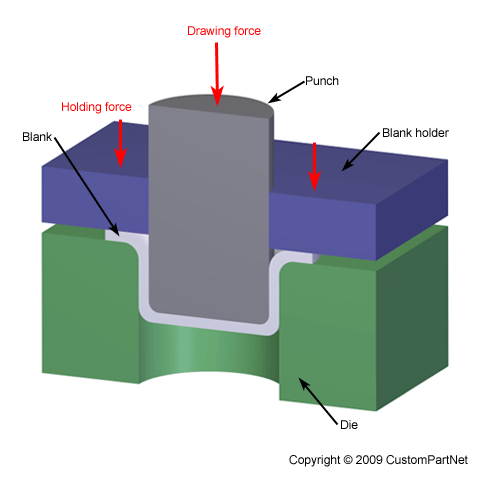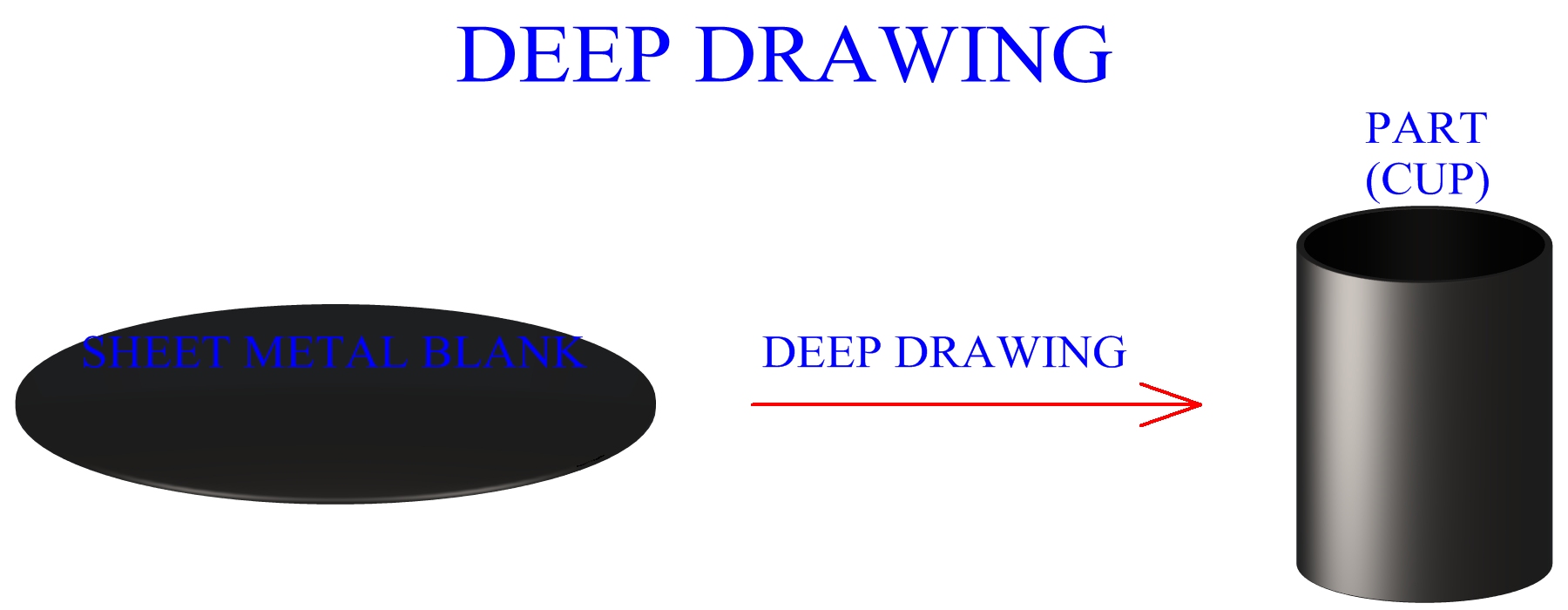sheet metal drawing operation is used to make
Deep Drawing Deep Drawing is a sheet metal forming operation used to make cup-shaped box-shaped or other complex-curved hollow-shaped parts. Drawing Sheet metal forming operation used to make cup shaped box shaped or other complex curved hollow shaped parts Performed by placing a piece of sheet metal over a die cavity and then pushing the metal into the opening with a punch.
The first one is sheet metal cutting second one is sheet metal bending or forming and the last one is known as deep drawing.

. The punch is the desired shape of the base of the part once drawn. C Form height to thickness ratio To determine the minimum form height for sheet metal use the following formula. D 25T.
Deep drawing operation in sheetmetal is a widely used sheet metal forming Operations in the automotive and consumer goods sector to manufacture sheet metal parts. The most common sheet metal form is a bend. As the load applied through the punch the sheet metal is forced to.
Straight polarity in arc welding is obtained with A alternating current electrode with electrode. The deep-drawing process converts a sheet metal blank. Sheet is held by jaws or drawbeads at both the ends and then stretched by punch such.
The blank is held down flat against the die by a blank holder 25. The die cavity matches the punch and is a little wider to allow for its passage as well as clearance. This setup is similar to sheet metal cutting operations.
It is performed by placing a piece of sheet metal over a die cavity and then pushing the sheet into the opening with a punch. Drawing shapes Drawing Radii. Stretch forming is a sheet metal forming process in which the sheet metal is intentionally stretched and simultaneously bent to have the shape change.
Forming sheet metal is usually done either by drawing the metal or by pressure forming the metal. Flanging bending edges of sheet metal to 90 degrees Dimpling punching a hole followed immediately by flanging the edges Hemming folding the edge of a sheet over itself Seaming joining 2 edges of sheet metal by hemming Roll Forming Multiple rolls to form linear products similar to extrusion. Drawing is a sheet metalworking operation used to produce cup-shaped or box-shaped or other complex-curved hollow parts.
Bending of Tube Stock. Since sheet metal cannot be bent to a 90-degree position without breaking at sharp corners all bends will have an acceptable bend radius. Sheet metal drawing operation is used to make A wire B tube C cup shaped parts D rods 063.
Deep drawing of sheet metal is performed with a punch and die. The punch-die clearance is slightly larger than the thickness of the sheet metal to be deep drawn. Drawing is accomplished by placing a piece of sheet metal over a die cavity and then using a punch to push the metal into the cavity.
In drawing operation metal flows from one place to other to give the required shape. In this article we mainly focus on sheet metal cutting operations and other two we will discuss into upcoming articles. Distance D 25T R see fig.
The die cavity matches the punch and is a little wider to allow for its passage as well as clearance. The process involves a punch with a round comer and a die with a large radius. The punch is the desired shape of the base of the part once drawn.
What the part engineers look for is even metal thickness on the entire finished part. Drawing is a sheet-metal-forming operation used to make cup-shaped box-shaped or other complex-curved and concave parts by placing a piece of sheet metal over a die cavity and pushing the metal into the cavity with a punch. Drawing is a sheet metalworking operation used to produce cup-shaped or box-shaped or other complex-curved an concave parts.
Sheet metal drawing operation is used to make a wire. True False Coining is a bulk deformation process also used in sheet-metal work in which fine details in a die are impressed into the. When drawing metal the die engineers must ensure that the metal flows as its being formed in such a way as to not leave weak areas.
Deep drawing of sheet metal is performed with a punch and die. Mainly sheet metal process can be divided into three types. Introduction Cutting and forming thin sheets of metal usually performed as cold working Sheet metal 04 164 to 6 mm 14in thick.
Bends in the same plane should be designed in the same direction. Drawing is accomplished by placing a piece of sheet metal over a die cavity and then using a punch to push the metal into the cavity. When a metal blank is drawn into a die a change in its shape is brought about by forcing the metal to flow on a plane parallel to the die face with the result that its thickness and surface area remain about the same as the blank.
Bending produces the following types of forces in the parts A tensile B compressive C tensile and compressive D shear 064. Beverage cans ammunition shells automobile body panels. Bends can give strength and shape to a part and are formed in a machine using bend brakes.
To save the cost of punching or drilling in a secondary operation the following formulas can be used to calculate the minimum distance required.

Deep Drawing An Overview Sciencedirect Topics

Deep Drawing An Overview Sciencedirect Topics

9 Different Types Of Sheet Metal Operations With Diagram Pdf

Deep Drawing An Overview Sciencedirect Topics

Pin On Manufacturing Technology

Deep Drawing Sequence Sheet Metal Metal Forming Sheet Metal Bender

Deep Drawing Find Suppliers Processes Material

Virtual Lab Dayalbagh Educational Institute

Sheet Metal Forming An Overview Sciencedirect Topics

Sheet Metal Tools Cutting Marking Bending Tools
